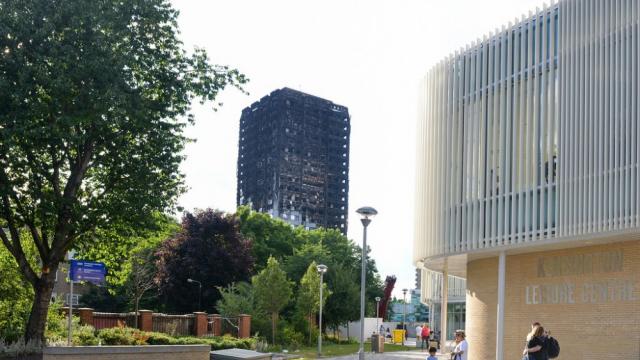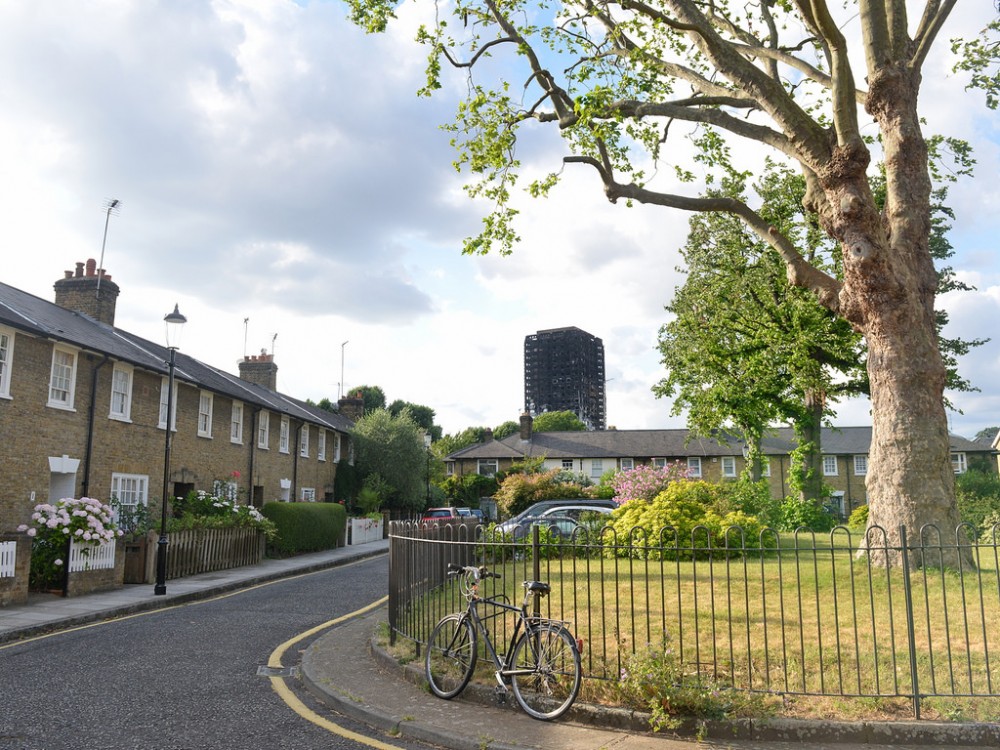
The fire at Grenfell Tower threw the world's attention on the tower block where at least 80 people, and likely many dozens more, were killedlast month. But zoom out to the surrounding area, Notting Dale, and you see a 200-year history of the same kind of inequality that caused the fire: people in poverty overlooked by the neighboring super rich.
Since Victorian times, Notting Dale residents have fed, run and created the modern City of London, a thread that continues today. As Labour MP David Lammy explained in an interview with the Guardian about Grenfell Tower's residents: “They are cleaners, they are porters, they are care assistants, maybe teaching assistants. People doing two, three jobs, working nights.”
But the same city that relies on these people has a long and ruthless track record of neglect – while capitalizing on their poverty. The area has been a frontline in the fight against racism. The communities living there have organized against their exploitation before, as they do now, with some long-lasting success stories that can serve as lessons for today. But the Victorian era is also a warning, revealing how far society can descend into inequality when poor lives do not matter.
Exhuming the Past
On the day of the fire I went to help out in an Irish Catholic Church, a stone's throw from the tower. What I did not realize was the church's history: 200 years ago, the urban sprawl was farmland and the missionary church's target audience were migrant Irish seasonal workers. Many were likely escaping the Irish potato famine, aggravated by the British monarchy. During this time, the seasonal camp became permanent.
Others joined, driven off their land by the enclosures, in which common land was privatized. The process of mechanization, with the Agricultural Revolution, forced more rural laborers into cities. Notting Dale continues to this day to be a place where refugees and migrants seek a new life. The first named victim of the Grenfell Tower fire was a Syrian refugee.
Notting Dale was one of London's many 19th century slums. The road to Grenfell Tower is called Pottery Lane, because from the 1830s onwards bricks were dug from its clay rich soil. People worked in the kilns. Other washed clothes for the rich. But those making the building blocks for the fast growing city around them were not afforded good accommodation; in 1840, building regulations didn't yet exist. Houses were shacks, built on short term leases for a fast profit by property speculators. The cut-throat landlord legacy runs deep.
An area in Notting Dale is still called the Piggeries. There, inhabitants fattened pigs for sustenance, using waste from the rich as feed – a Victorian food bank. Squalid housing, overcrowding, bad drainage from the clay pits and the pigs led to cholera epidemics. During one epidemic, in 1846-48, life expectancy was just 11 years.
Charles Dickens said the Piggeries and Potteries were “a plague spot scarcely equalled for its insalubrity by any other in London." A short-lived horse race course was built nearby that failed due to the soft clay ground. Times newspaper articles from that time attacked those living in the slums; as ever, the rich Victorian establishment demonized the poor.
Where Rich and Poor Grew Side by Side
Meanwhile, in the mid-19th century, posh suburbs were built next door to Notting Dale. They are now some of the most expensive properties in the world. In 1860 came the Hammersmith City railroad, a smokey, sooty line that stopped the rich developments from moving in. The people that built the railway again lived in poor conditions – often in railway cars.
What happened to those living in the slum is not fully known. Social historian Professor Jerry White explains how Notting Dale and many other London slums were cleared, as dispossessed people forced or urged to move to London were then pushed out by gentrification. It is a process that continues today in austerity Britain.
At the same time, society has moved away from some of its most savage Victorian anti-poor oppression. The public health crises encouraged significant improvement for the poor who were not forcibly evicted. In Notting Dale, this meant sanitation, paved roads, health inspections and improved building standards. "Ragged" schools gave the poor education, and these improvements led to ideas of public welfare, universal education and healthcare after WWII.
These rights were hard fought from the bottom up – the result of a long history of struggle, including through trade unions, the chartist movement and suffragettes. Conditions improved relatively in Notting Dale into the mid-20th century, but even in capitalism's supposed “Golden Age,” exploitation was rife. One Notting Dale landlord and brothel owner Peter Rachman was so exploitative in the 1950s that Rachmanism still refers to the worst of slum-landlords. To counter this, people organized together in housing associations such as the Notting Hill Housing Trust, a charity set up in 1963 aimed at providing decent, low cost housing.
Migrating to the Present
The late 1960s also brought another change. Today, moving around Notting Dale near Grenfell Tower, you cannot miss noticing the way people work, live and play under the busy, polluting, elevated motorway. It has been another site of struggle that united this community, which has created community networks and engaged in direct actions. Pressure from the campaign resulted in similar elevated road plans being abandoned across London.
Twenty-three acres under the motorway were won as communal land, yet today there are new plans to gentrify the land amid rumors that the motorway will be sent underground.
Specifically, Notting Dale's Afro-Caribbean community had led the fight against the elevated motorway. Afro-Caribbeans came to the area when the British state advertised for workers in its colonies. From the 1950s onwards they filled post-WWII labour shortages, undertaking vital work such as doctors, nurses and bus drivers. Of course, Britain had also brutally dispossessed them, forcing them to the Caribbean during the slave trade between the 17th and 19th centuries.
Those invited to run the city were not welcomed by all. In 1958, white fascist gangs attacked the community and started the Notting Hill riots, whose racist element was deliberately concealed by the police. In reaction, the community came together in solidarity again, for example, through the Notting Hill Carnival, which nowadays attracts over 1 million people.
All Saints Road, a short walk east of Grenfell Tower, was known as the frontline against state-led racism. The police constantly targeted the black community, often focusing on the Mangrove, a restaurant owned by Frank Critchlow. After a protest in August 1970 against racial harassment, the police arrested Critchlow along with eight others for inciting a riot. The judge acquitted the Mangrove 9 and said there was evidence of "racial hatred in the Metropolitan police" – the first time this was admitted in a U.K. court.
Four years after the Mangrove trial, Grenfell Tower and Lancaster Estate were built. This was to house people who were moved out of slum-clearances – a significant change from the era when they were evicted with nowhere to go. But many recognize that we are now seeing a return toward a Victorian society with the removal of regulations that could have saved the lives of Grenfell Tower residents.
Once again, the poor and oppressed are being demonized. Notting Dale must be seen as a barometer of the establishment's treatment of the less fortunate. The warning sign of where we are heading may be the 24-story burnt-out building where so many lives were lost.
3 WAYS TO SHOW YOUR SUPPORT
- Log in to post comments















